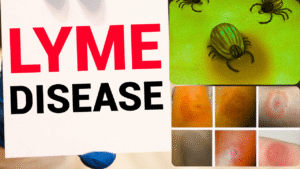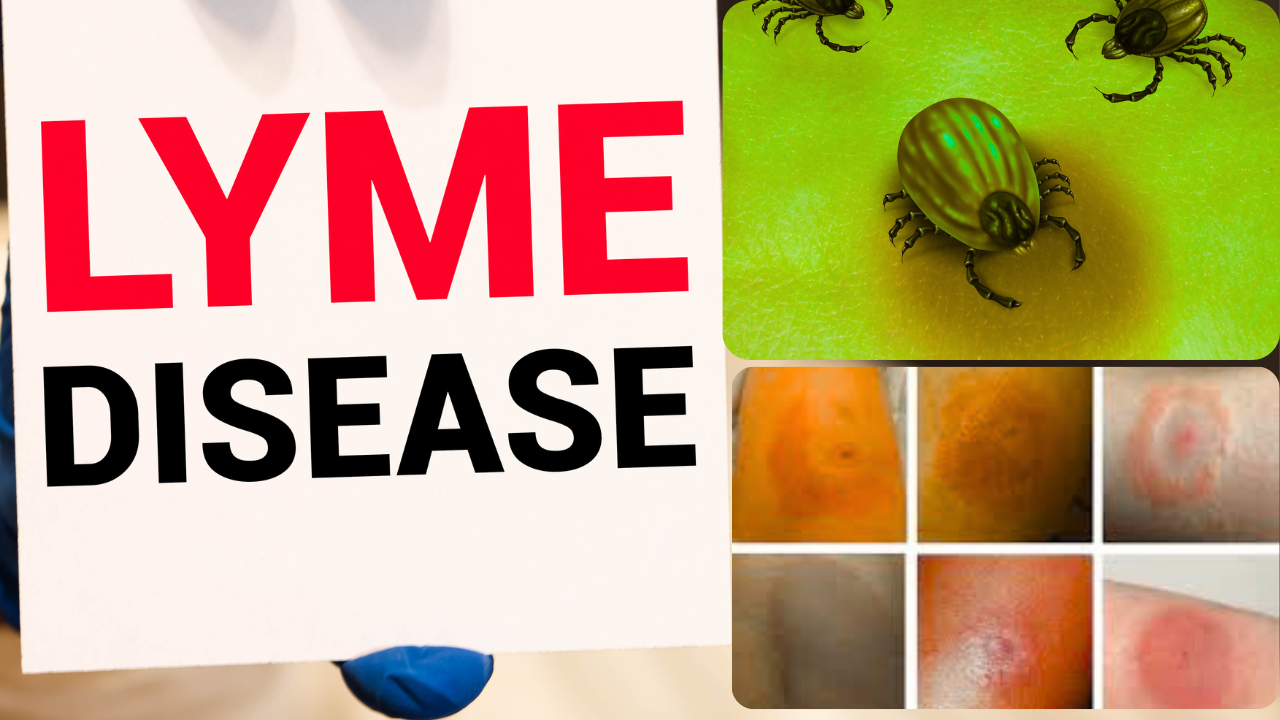Lyme Disease: Causes, Symptoms, and Treatment

What is Lyme disease?
Lyme disease is a type of infection that people get from bacteria carried by black-legged ticks, also called deer ticks. These ticks are very small and often hard to see. When an infected tick bites a person, it can pass the bacteria into the body. The infection can cause many different symptoms and may affect the skin, joints, heart, and nervous system. If caught early, Lyme disease rash can be treated with antibiotics, but if left untreated, it can lead to more serious health problems.
What causes Lyme disease?

Lyme disease is caused by a type of bacteria called Borrelia burgdorferi. In rare cases, it can also be caused by another bacteria called Borrelia mayonii. These bacteria live in black-legged ticks. When a tick bites a person, especially if it stays attached for 36 to 48 hours or more, it can pass the bacteria into the person’s bloodstream. This can lead to an infection that causes Lyme disease rash.
Phase 1: Early Localized Lyme Disease
The first phase happens 3 to 30 days after a person is bitten by a tick. The infection is still new and hasn’t spread through the body. During this phase, people may feel like they have the flu and may notice a round, red rash at the site of the bite. This rash, called erythema migrans (EM), is a common early sign and may look like a bull’s-eye, with a red center and a ring around it.
Other symptoms during this phase include:
- Fever
- Chills
- Headache
- Fatigue (feeling very tired)
- Muscle and joint aches
- Swollen lymph nodes (small lumps under the skin that fight infection)
Phase 2: Early Disseminated Lyme Disease
If Lyme disease is not treated in Phase 1, it may spread to other parts of the body. This phase usually begins 3 to 10 weeks after the tick bite. The infection may affect the skin, heart, joints, and nervous system.
People may have:
- More rashes on other parts of the body
- Stiff or painful neck
- Weakness in the muscles of the face (called Bell’s palsy), which may make it hard to smile or close one eye
- Heart problems, such as an irregular heartbeat or chest pain
- Pain that starts in the hips or back and spreads down the legs
- Numbness, weakness, or pain in the hands or feet
- Swollen eyelids or pain in the eye tissues
- Nerve inflammation in the eyes that may cause pain or vision loss
Phase 3: Late Disseminated Lyme Disease
This phase can occur months or even years after a tick bite if the person was not treated. The bacteria can spread throughout the body and cause long-term health problems.
Common symptoms in this phase include:
- Severe pain and swelling in large joints, such as the knees
- Numbness and tingling in the hands or feet
- Memory problems or trouble concentrating
- Chronic fatigue (feeling tired all the time)
- Depression or mood changes
How is Lyme illness diagnosed?
Doctors may suspect Lyme illness based on a person’s symptoms, medical history, and whether they live in or have visited areas where Lyme disease rash is common. Blood tests can help confirm the diagnosis. One common test is called ELISA, which checks for antibodies the body makes to fight the bacteria. Another test, called Western blot, is used to confirm the ELISA test results.
How is Lyme disease treated?
Lyme disease is usually treated with antibiotics. In the early stages, doctors may prescribe pills such as doxycycline, amoxicillin, or cefuroxime. These are usually taken for 10 to 21 days. If the disease is more serious or has affected the heart or nervous system, the person may need stronger antibiotics through an IV (a tube in the vein).
Can Lyme illness be prevented?
Yes, there are ways to prevent Lyme illness :
- Avoid walking in tall grass or wooded areas where ticks live
- Wear long sleeves and pants when outdoors
- Use tick repellents with DEET on the skin or permethrin on clothes
- Shower soon after being outside to wash off ticks
- Check your body for ticks after being outdoors, especially in hidden areas like behind the knees, under the arms, and in the hair
When should I see a doctor?
If you think you’ve been bitten by a tick and notice a rash, fever, or flu-like symptoms, it’s important to see a doctor right away. Early treatment can prevent serious health problems. If you’ve already had Lyme illness and are still feeling sick months later, tell your doctor. You may need more help to manage long-term symptoms.

